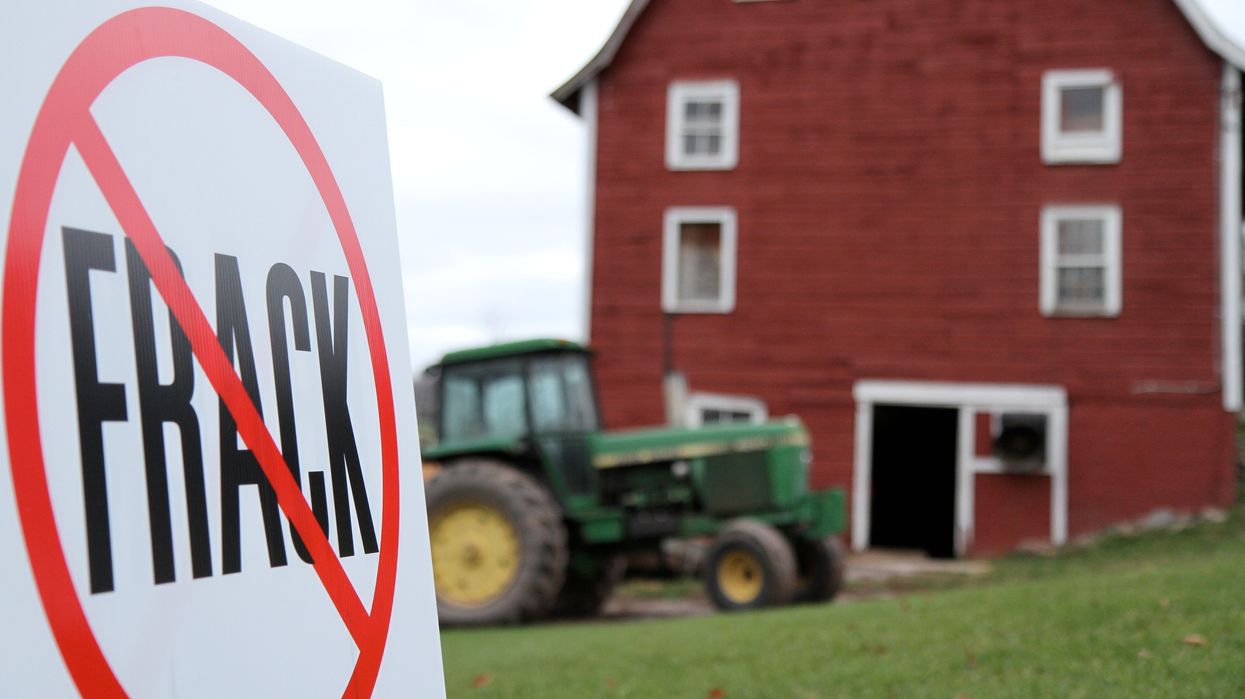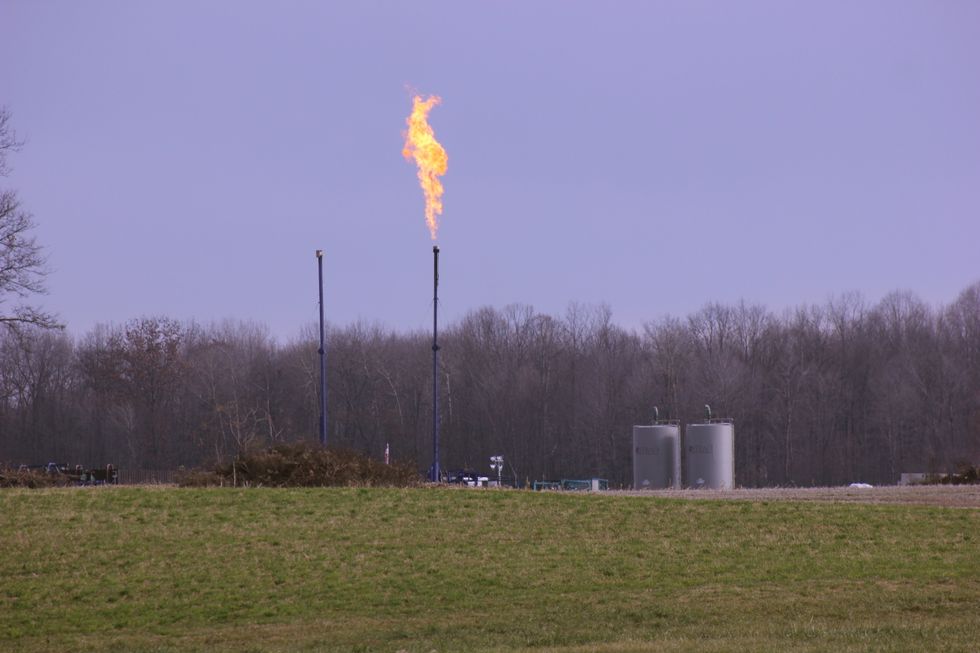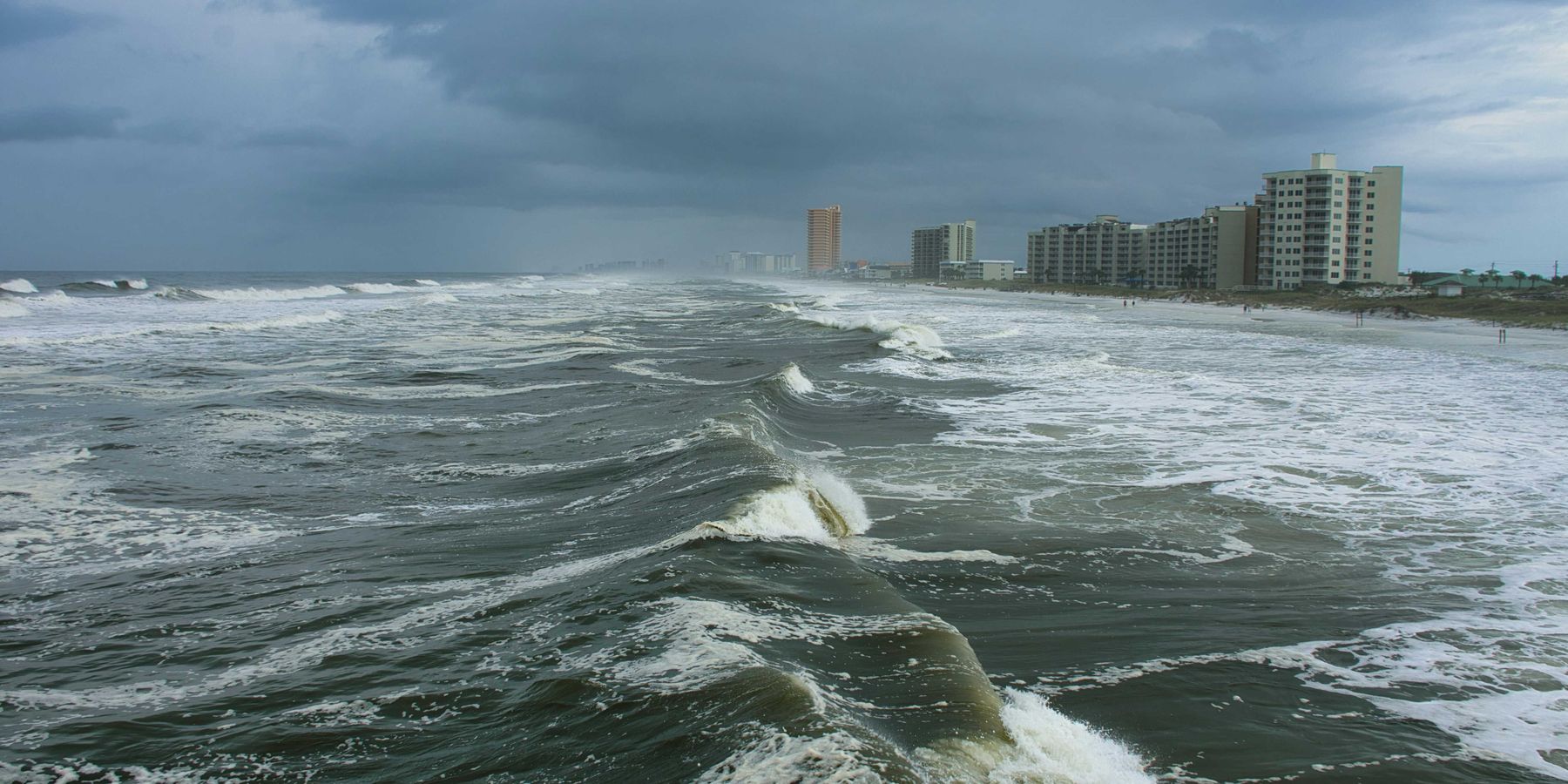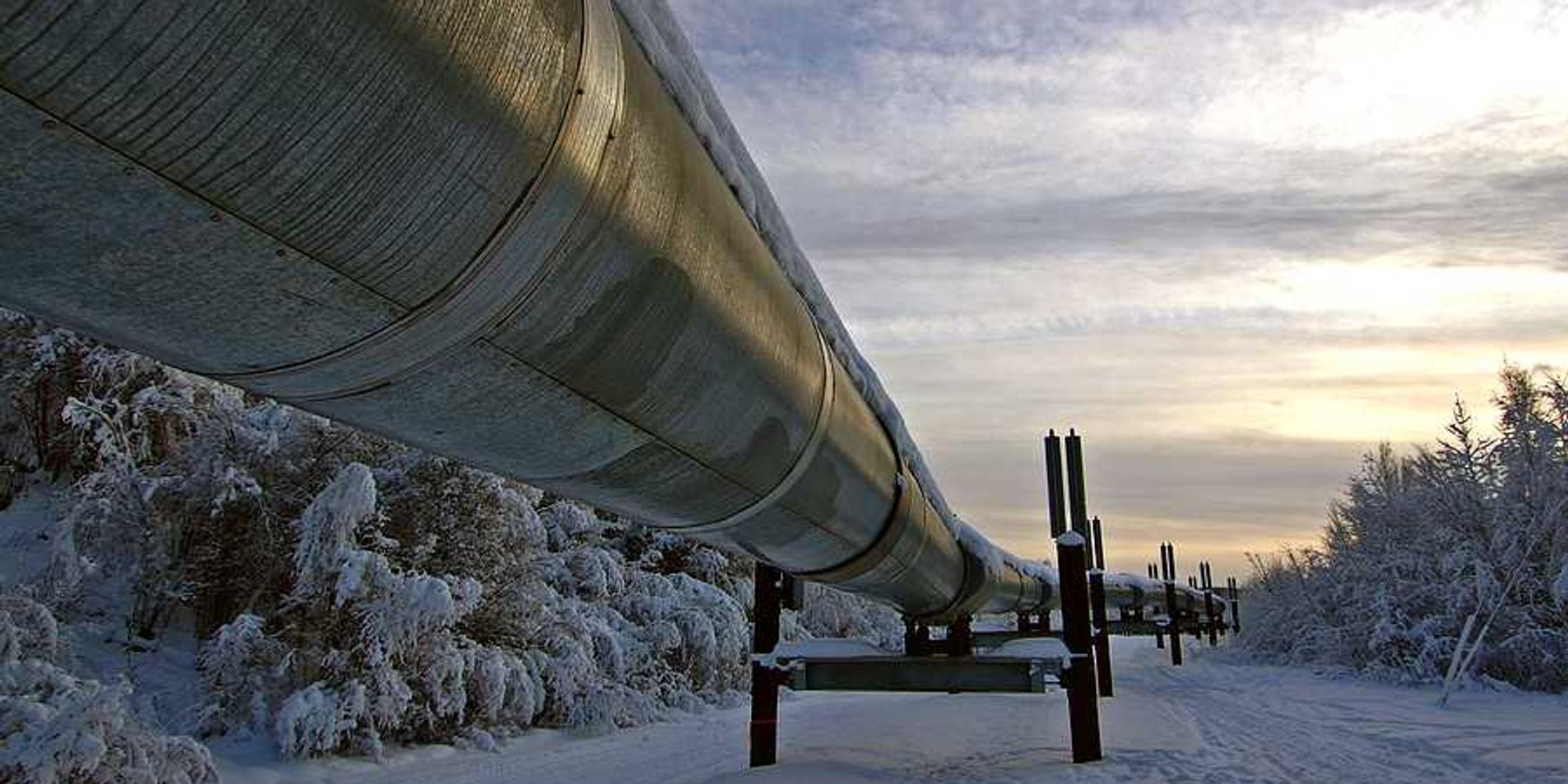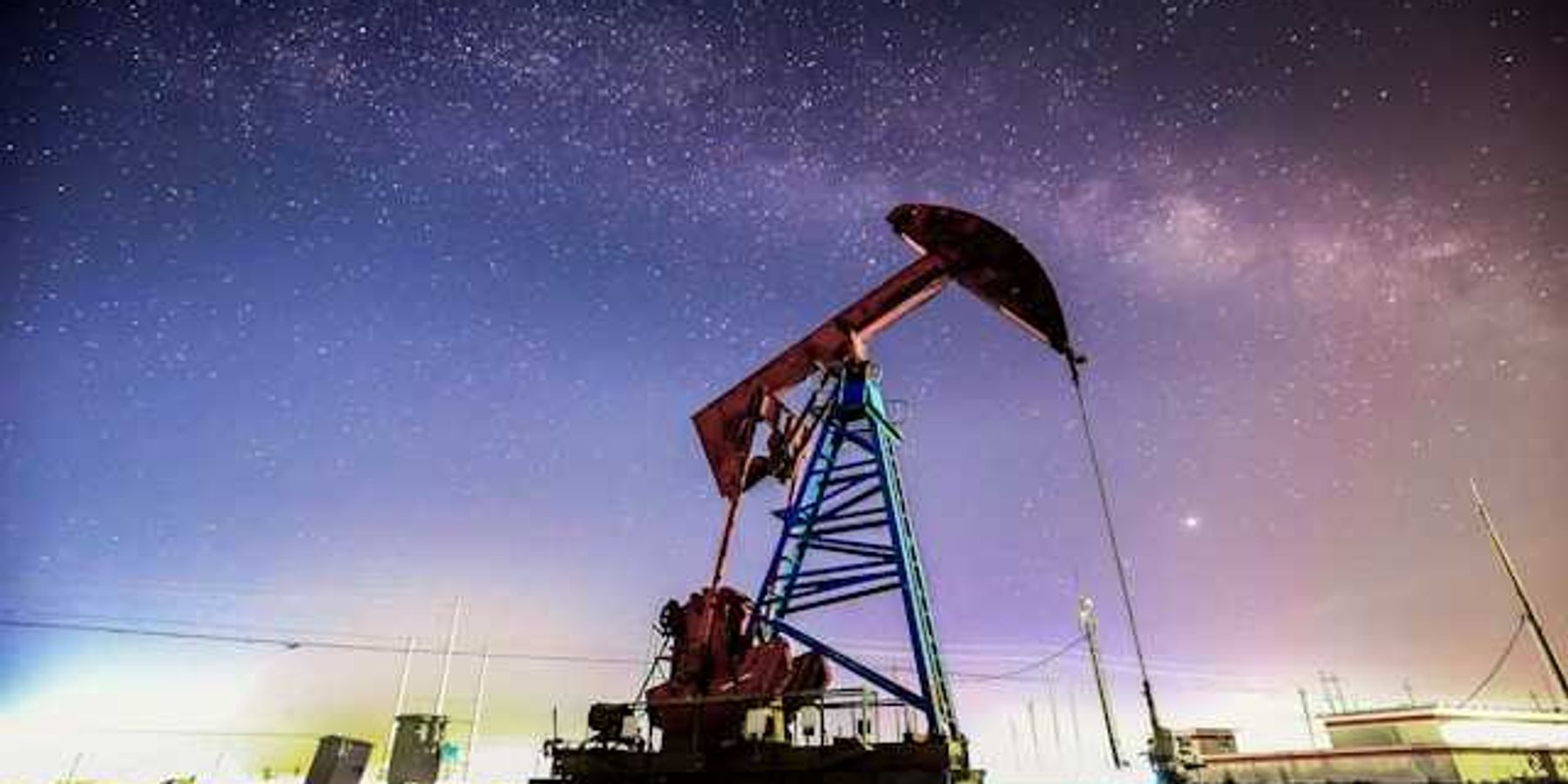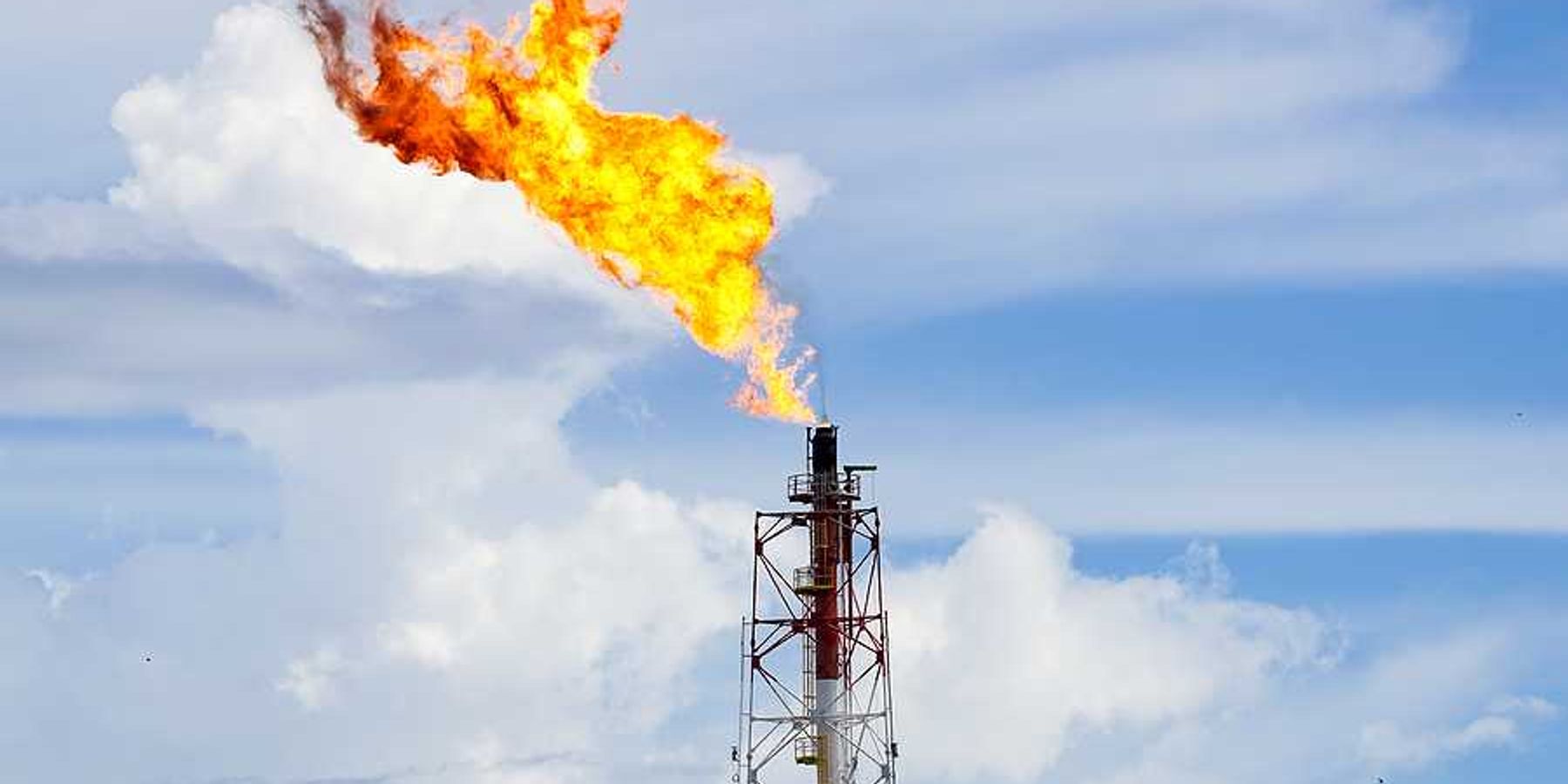
Fracking in Pennsylvania is too close to residents for safety: Study
To protect public health, a panel of experts recommends more than doubling the required distance between frack wells and homes.
PITTSBURGH – Regulations on how close fracking facilities can be to buildings and homes in Pennsylvania are too lax to adequately protect public health, according to a new study.
The study, undertaken by the Southwest Pennsylvania Environmental Health Project (EHP) and published last week in the peer-reviewed journal PLOS One, asked a panel of 18 experts— including healthcare providers, public health practitioners, environmental advocates, researchers and scientists—to compare minimum setback requirements against emerging research about the health impacts of fracking.
Unconventional oil and gas operations include hydraulic fracturing, or fracking—in which a high pressure mix of water, chemicals and sand are injected into wells to release oil or gas—and its related infrastructure, like well pads and natural gas compressor stations.
Currently, horizontally drilled well pads are required to be at least 500 feet away from the nearest occupied building in Pennsylvania. For natural gas compressor stations and processing plants, the minimum goes up to 750 feet, but those minimums can be waived by property owners, and some fracking facilities operate within 300 feet of occupied buildings in residential areas in the state.
Of the 18 experts the study consulted, 16 concluded that, in order to protect public health, the setback distance for a fracking facility, such as a well pad or compressor station, should be at least one-quarter mile (1,320 feet) from the nearest occupied building.
"States across the nation have a wide variety of setback regulations for this industry, and over the past several years there have been an increasing number of studies on the health impacts associated with living near these facilities," Celia Lewis, a research specialist with the Environmental Health Project and lead author of the study, told EHN. "A lot of new information has come to light about what these health impacts are."
A number of studies have found that the closer someone lives to unconventional oil and gas facilities, the more likely they are to experience range of health issues including low birth weights, childhood cancers, asthma exacerbations, migraines and fatigue, and even depression.
The authors of the study noted that setback regulations should protect residents from risks like spills and explosions at the sites, but also from airborne emissions, which can include methane, formaldehyde, benzene, toluene, and other volatile organic compounds (VOCs), all of which can cause short and long-term health issues ranging from respiratory and central nervous system issues to birth defects and increased cancer risk.
Other states and municipalities have a wide range of setback regulations. A 2013 review that was used to assess Pennsylvania's regulations found that of the 31 states with setback minimums in place, 20 had restrictions that specifically apply to buildings (as opposed to roads or water sources), and the restricted distances ranged from 100 feet (New York) to 1,000 feet (Maryland).
The study used the Delphi method, in which a panel of experts are asked to reach consensus based on several rounds of questioning during which they review other research and one another's responses. David R. Brown, a toxicologist, consultant to the Environmental Health Project and co-author of the study, said the method is helpful when time is of the essence.
"We needed information in months or weeks, not years," Brown said. "At the Environmental Health Project, we are regularly evaluating health concerns coming from people living near these sites coming to us with concerns, and we don't feel that we can wait 10 or 20 years to see the long-term health impacts before making recommendations."
"I don't need to be breathing emissions the rest of my life and worried"
Some municipalities in Pennsylvania have already established setback ordinances that are greater than state minimums. For example, Penn Township, about 17 miles southeast of Pittsburgh in Westmoreland County, created a setback minimum of 600 feet for unconventional oil and gas wells, and 1200 feet for natural gas processing facilities in 2014. South Fayette Township, about 16 miles southwest of Pittsburgh in Allegheny County, enacted a minimum setback of 1700 feet in residentially-zoned areas, and 2500 feet for schools and hospitals.
The new study also comes on the heels of a controversial Pennsylvania Superior Court ruling from April which set a precedent that oil and gas companies can be charged with trespassing if they extract natural gas from beneath a property for which they don't hold a lease while operating a fracking well next door.
The natural gas industry is seeking to have that ruling overturned by the state's Supreme Court.
Dale Tiberie, a resident of West Pike Run Township in Washington County, about 30 miles south of Pittsburgh, is working with local politicians to try and pass a similar ordinance in his hometown. In 2014, Rice Energy Company (which was purchased by EQT Corporation in 2017) built a well on a neighboring property. The company asked Tiberie and his wife to waive the 500 foot setback minimum, but they refused, so the well was drilled almost exactly 500 feet from his home.
The well sits on a hill above his home, and Tiberie, a retired coal miner, said he can smell the emissions from the site nearly every night.
"I sucked coal dust for 40 years and made it out without any lung problems," Tiberie told EHN. "I don't need to be breathing emissions the rest of my life and worried about getting sick from that stuff… I don't think there are many politicians, or people from the upper echelons of the energy companies, that live this close to a well pad—and I don't think they'd want to."
Tiberie also worries about explosions.
"There was one incident down in Greene County where a [Chevron] wellhead ignited and the fire was so hot the first responders couldn't get within 650 feet of the wellhead," Tiberie said. "If my house is sitting 500 feet away, I'd be ash before they had a chance to respond."
While it's too late for anything to be done about the well near Tiberie's house, he hopes new regulations might spare others in the community.
"I'll have to live with that stress for the rest of my life," Tiberie said. "When you think about these health impacts, you've gotta include stress."
Doubling the distance
The Environmental Health Project's research isn't the first to examine setback minimums. Last year, researchers for L.A.-based environmental advocacy group STAND LA conducted a review of nationwide research on setback distances in order to make recommendations for setback ordinances in the region. Their final recommendation was a 2,500 foot setback.
The newly published PLOS One article also follows a 2016 study that reviewed setback regulations, geography, thermal modeling and air pollution data in Marcellus, Barnett, and Niobrara Shale Plays. That study, published in Environmental Health Perspectives, also concluded that existing regulations "may not be sufficient to reduce potential threats to human health in areas where hydraulic fracturing occurs."
Dr. Marsha Haley, a radiation oncologist and researcher at the University of Pittsburgh's Cancer Institute who led the 2016 study, said of the panel's quarter mile setback recommendation: "This is over double the distance of the current setback, [which is] consistent with the findings in our paper—that the Pennsylvania setback of 500 feet is inadequate when you look at the data for explosions, fires and air pollution. High-occupancy buildings, especially those with vulnerable populations, should have a larger setback because you have to consider the time and logistics of evacuation."
"Compared to where we started, great progress has been made in oversight," Haley added. "This being said, when I talk to people who live in the shale fields in close proximity to fracking operations, I realize there is a lot more work to do. As scientists and citizens we need to continue to advocate for health and safety in areas where fracking is occurring."
A spokesperson for the American Petroleum Institute (API), a trade organization for the oil and gas industry, declined to comment on the study's recommendations, but told EHN the trade group "pays attention to the scientific research of others, carefully reviewing published articles to evaluate findings within the context of the studies' limitations.
"Protecting the health and safety of our workers, the communities where we operate, and the environment is a core value for our industry."

Protecting the most vulnerable
Following the publication of the new study, the Environmental Health Project has issued official recommendations that Pennsylvania increase its minimum setback distances from 500 feet for smaller fracking facilities to a minimum of 0.6 miles (3,281 feet), and increasing the current 750 feet for gas processing plants and large compressor complexes to a minimum of 1.25 miles (6,600 feet).
The group also recommended a 1.25 mile minimum setback distance for any fracking facility placed near a school, daycare, hospital or nursing home.
"The most concerning thing for the experts was for potential impacts on our youngest members of society," Lewis said. "These sites are being placed within residential areas quite often and near schools and daycares and places where there are very vulnerable populations."

